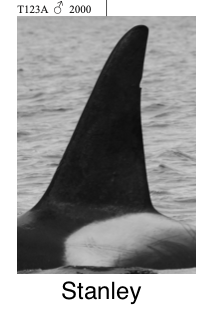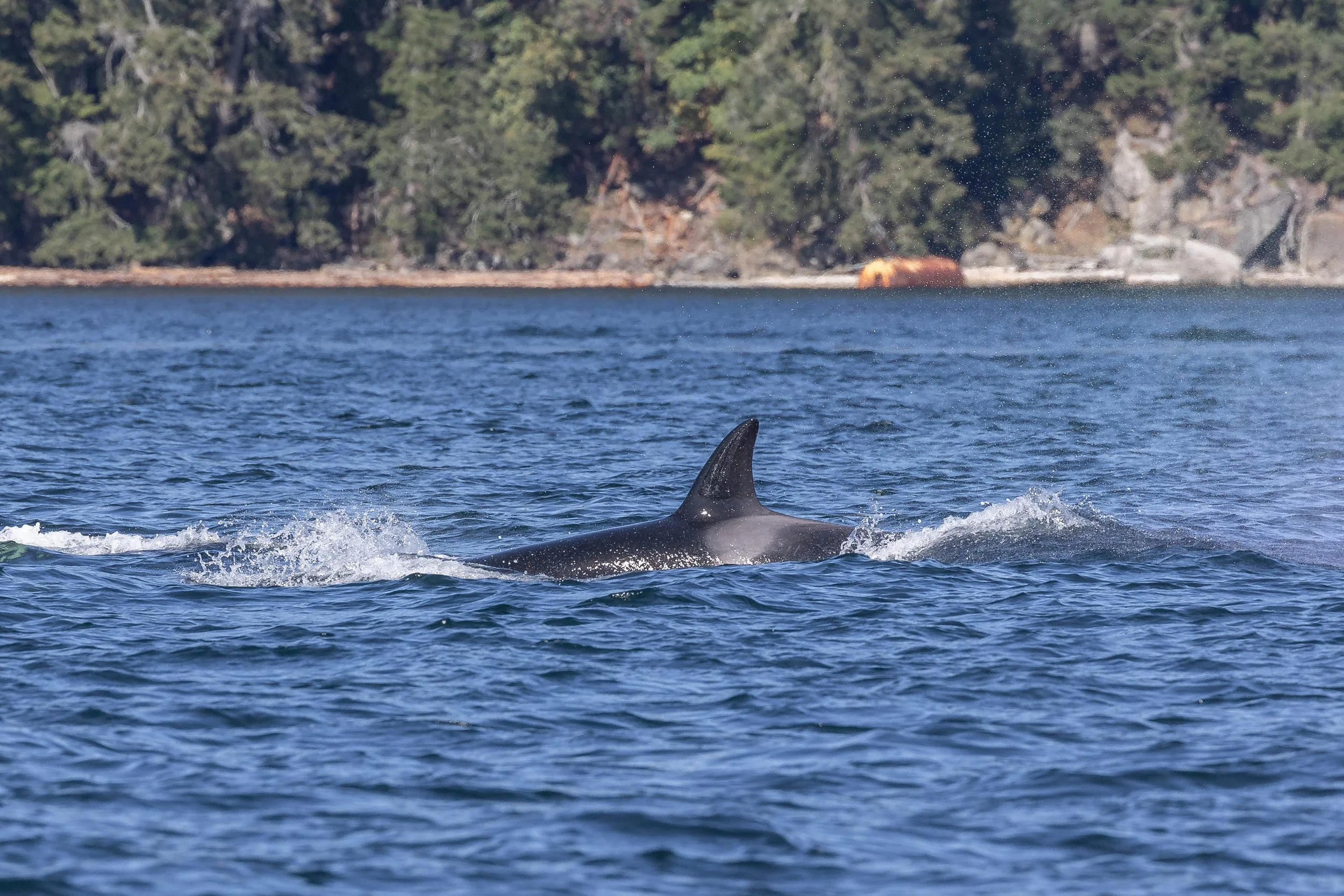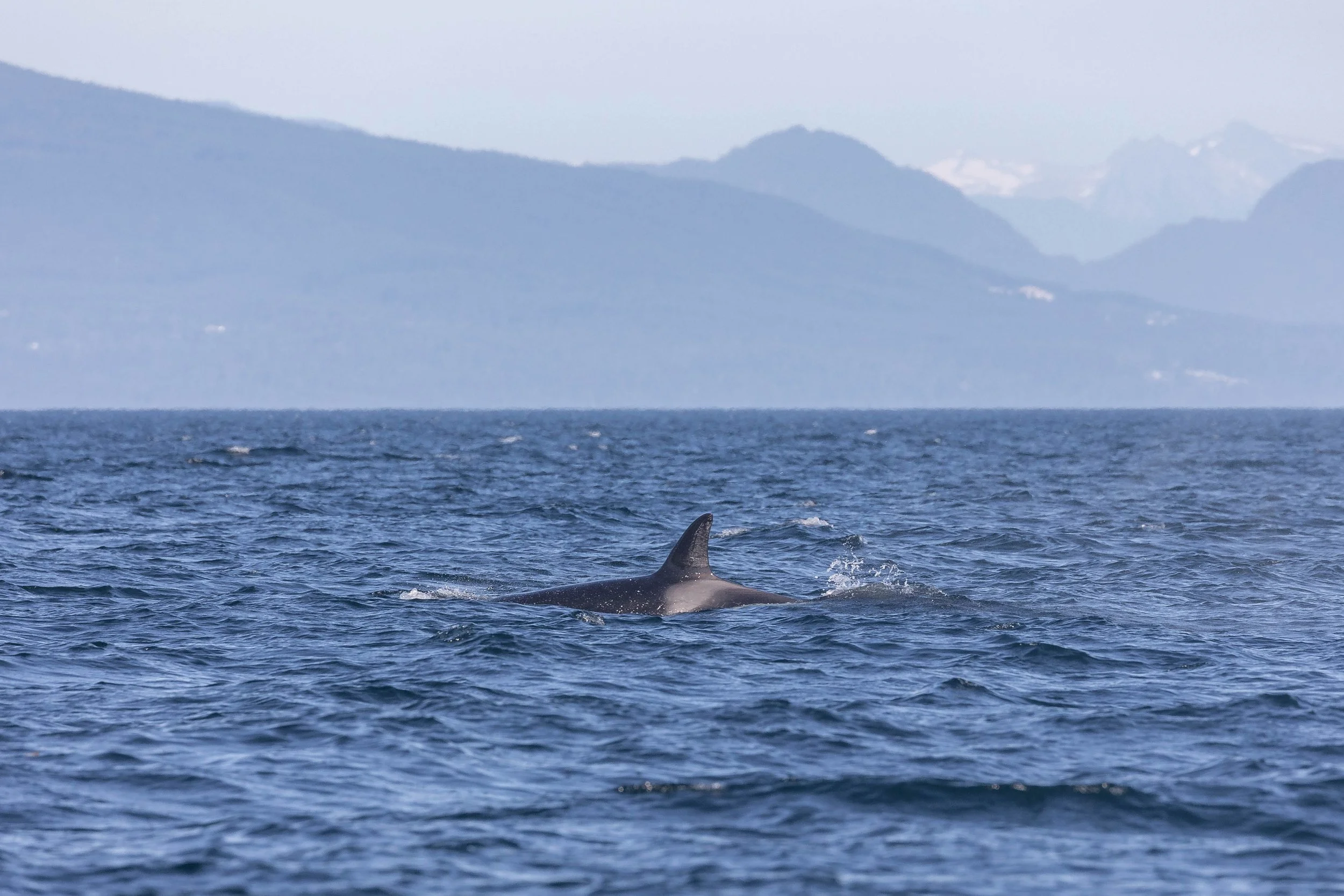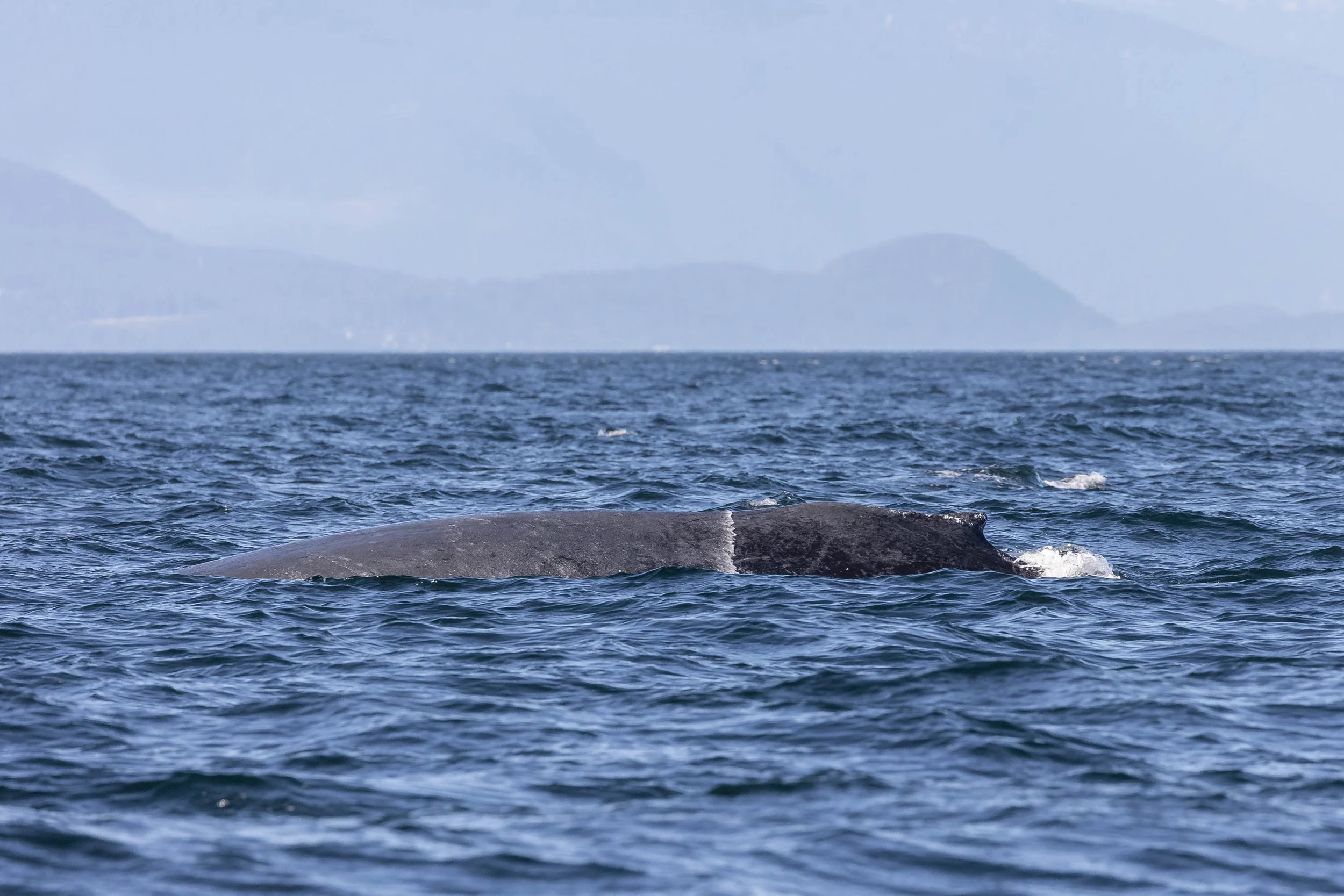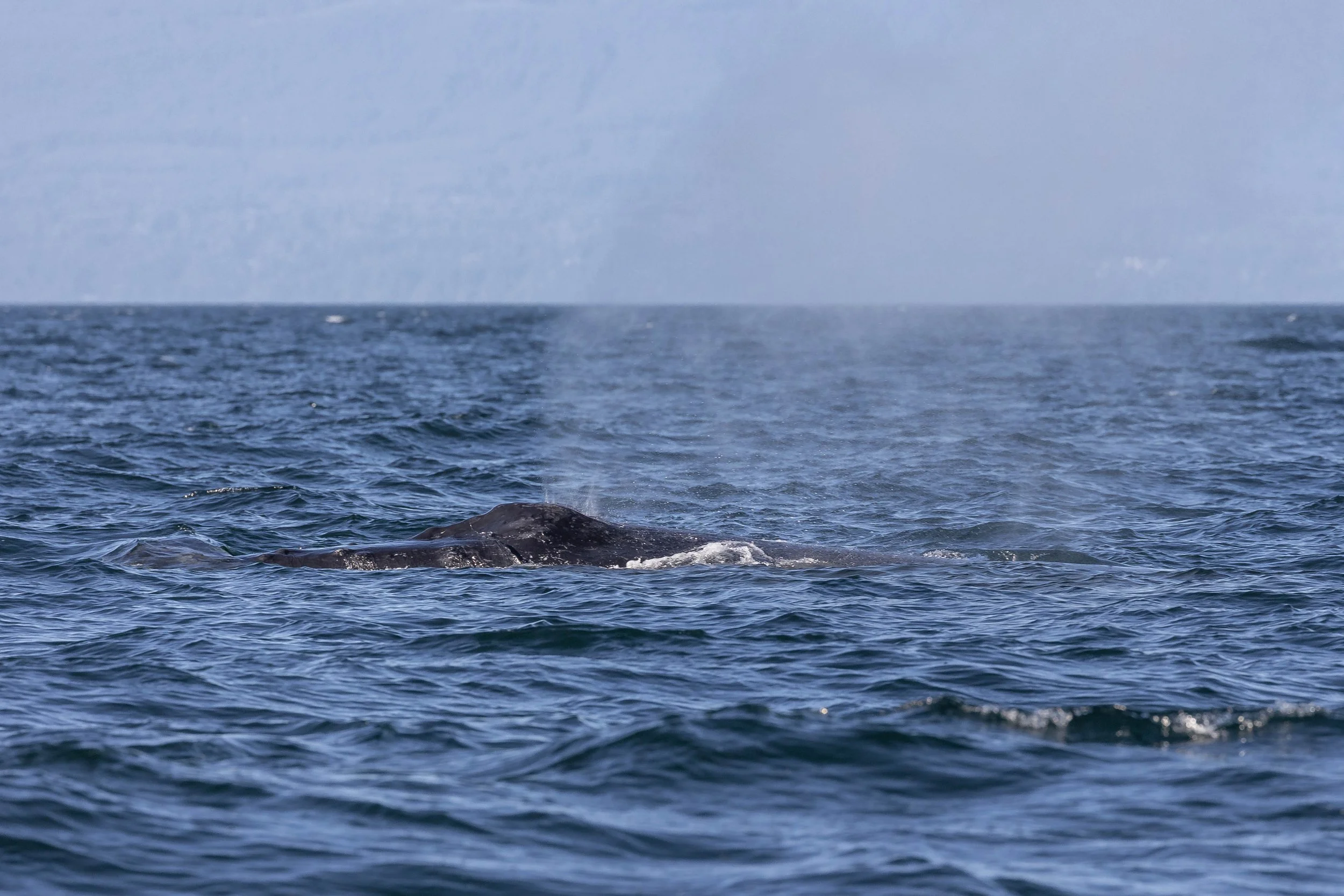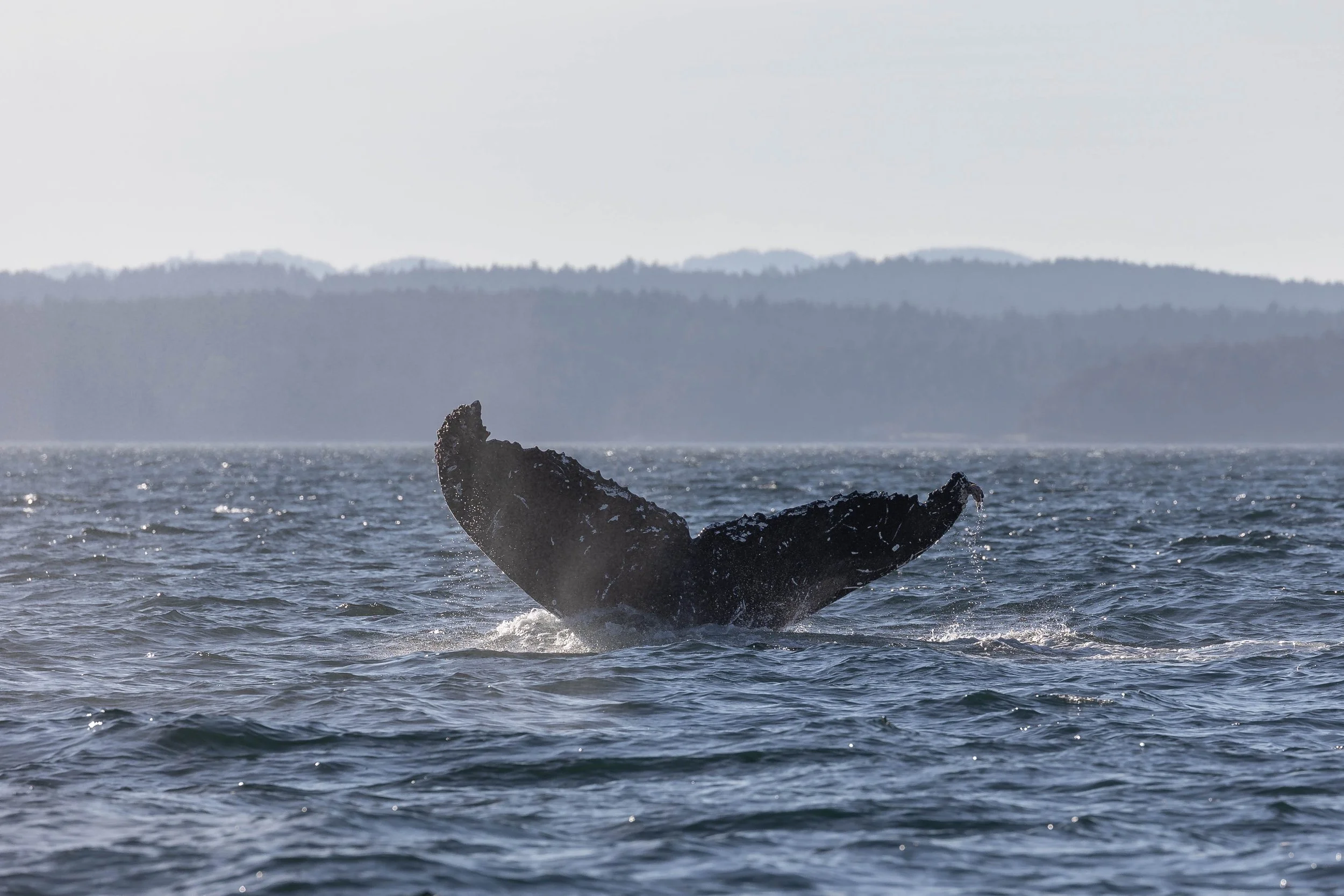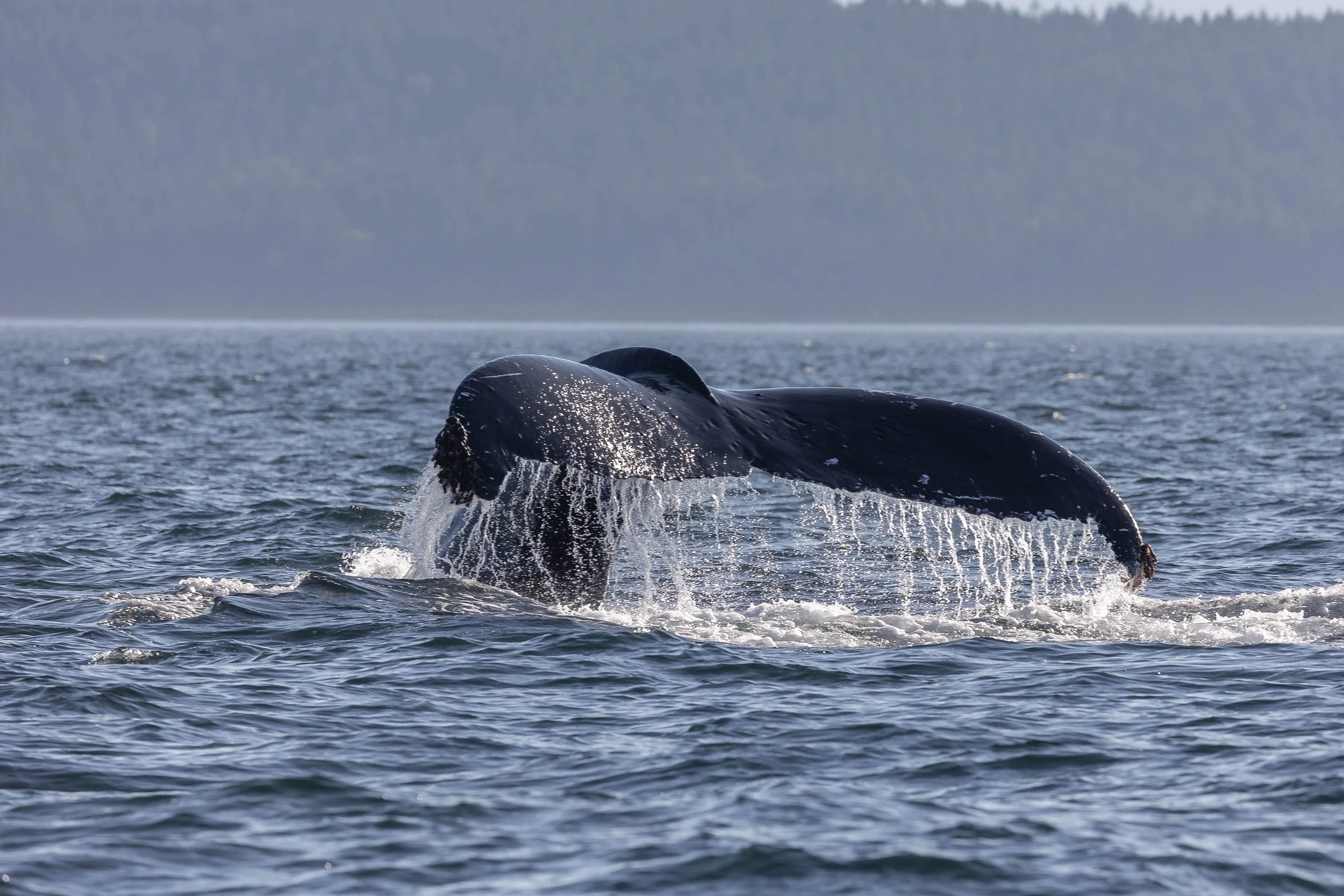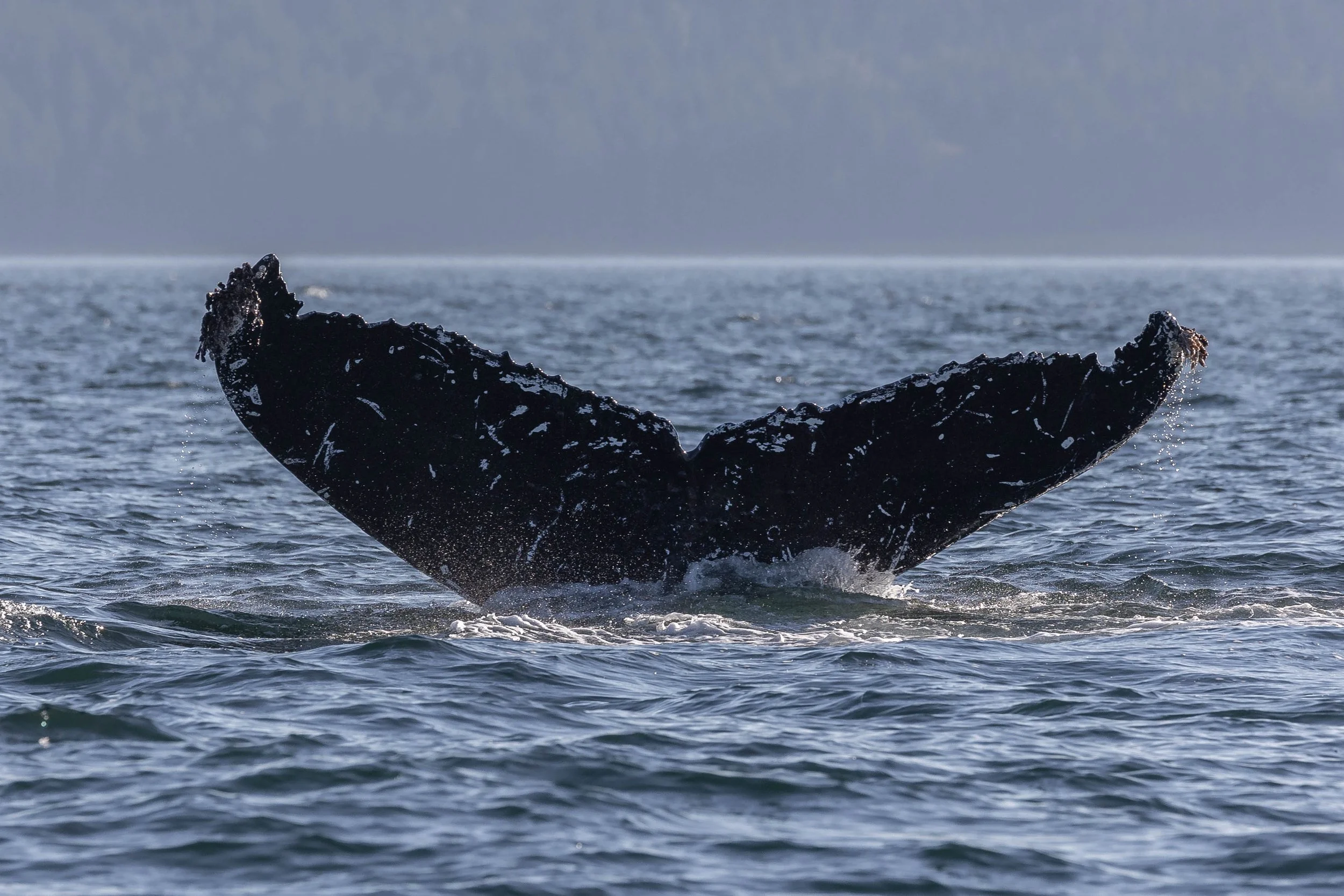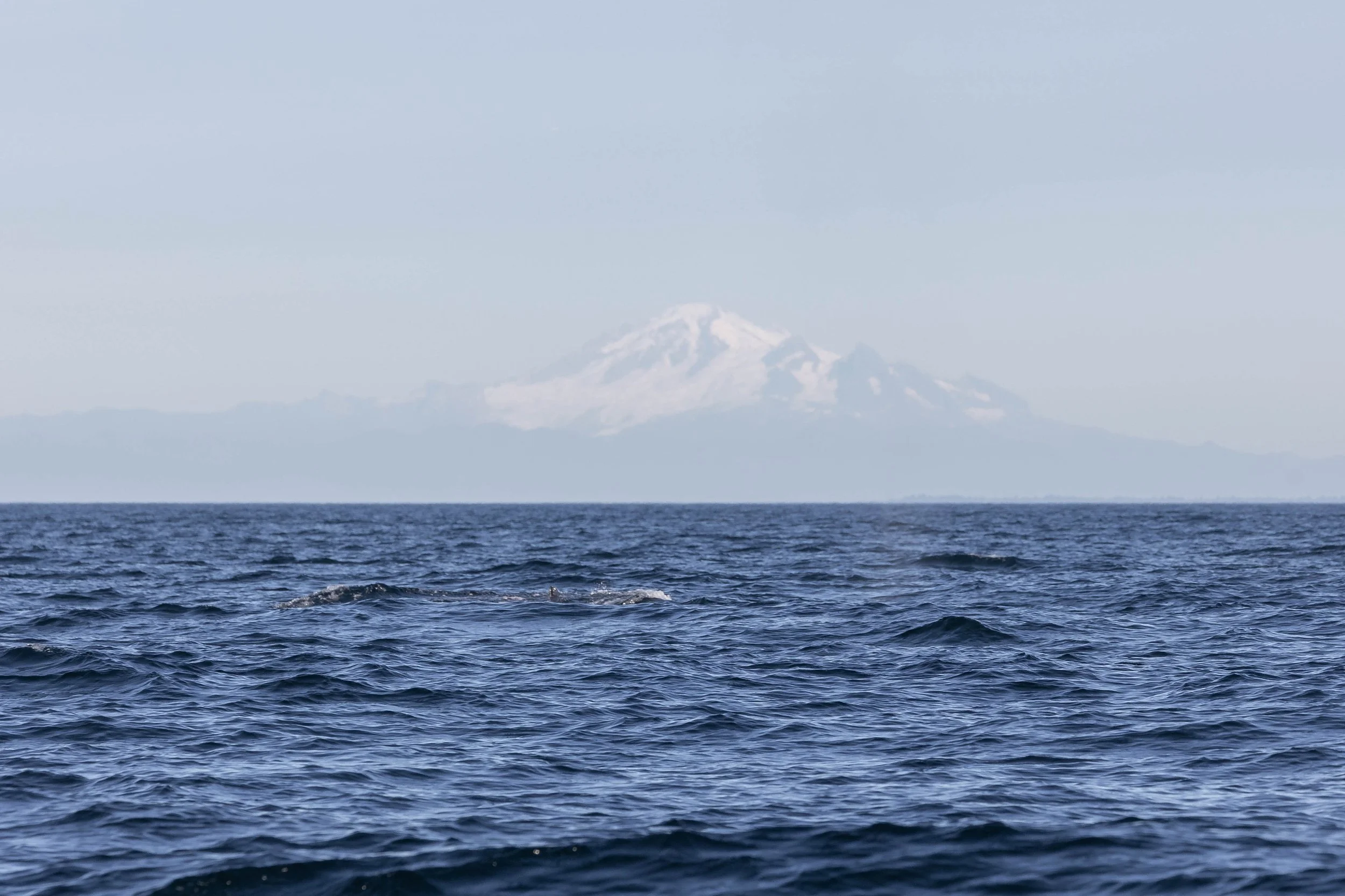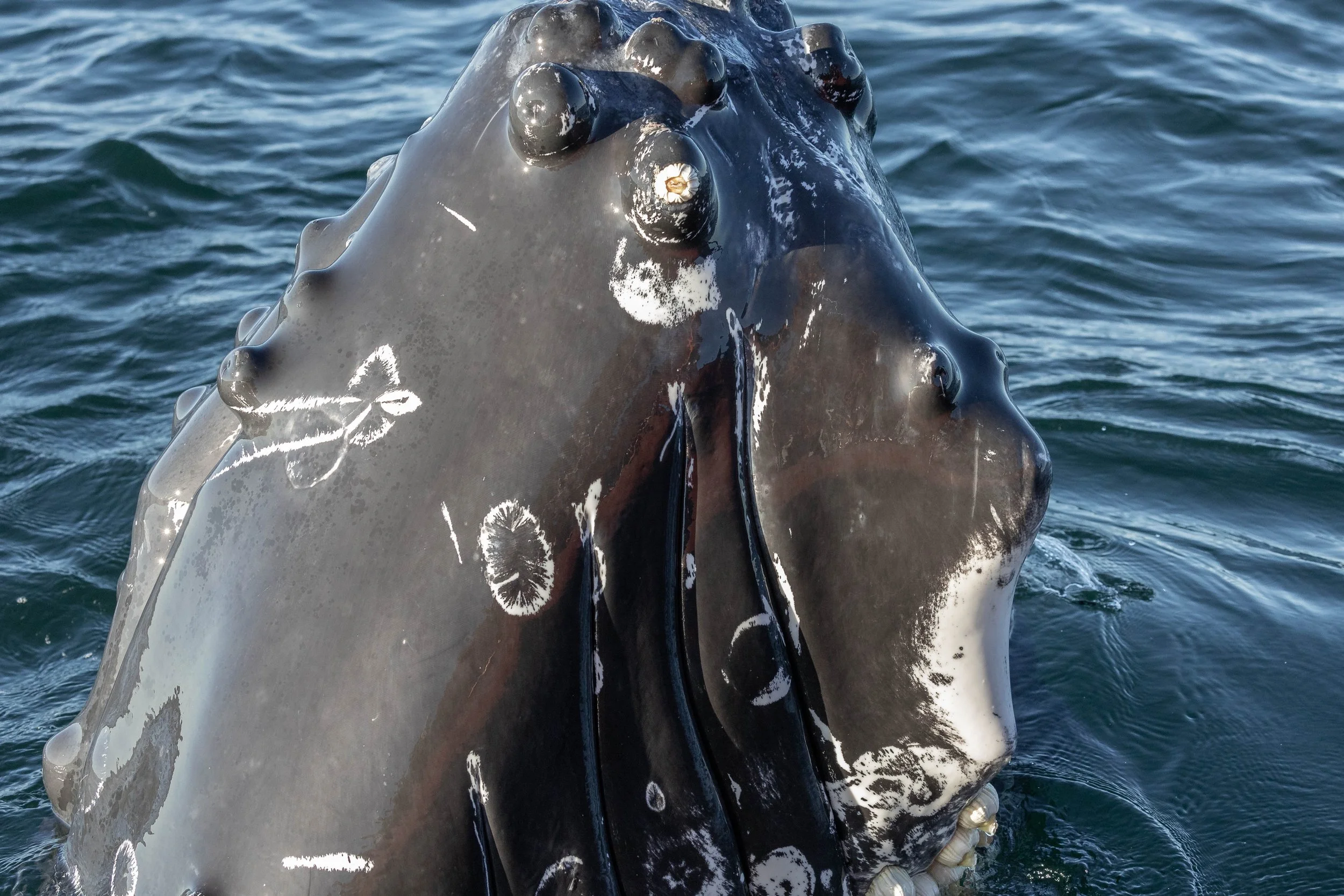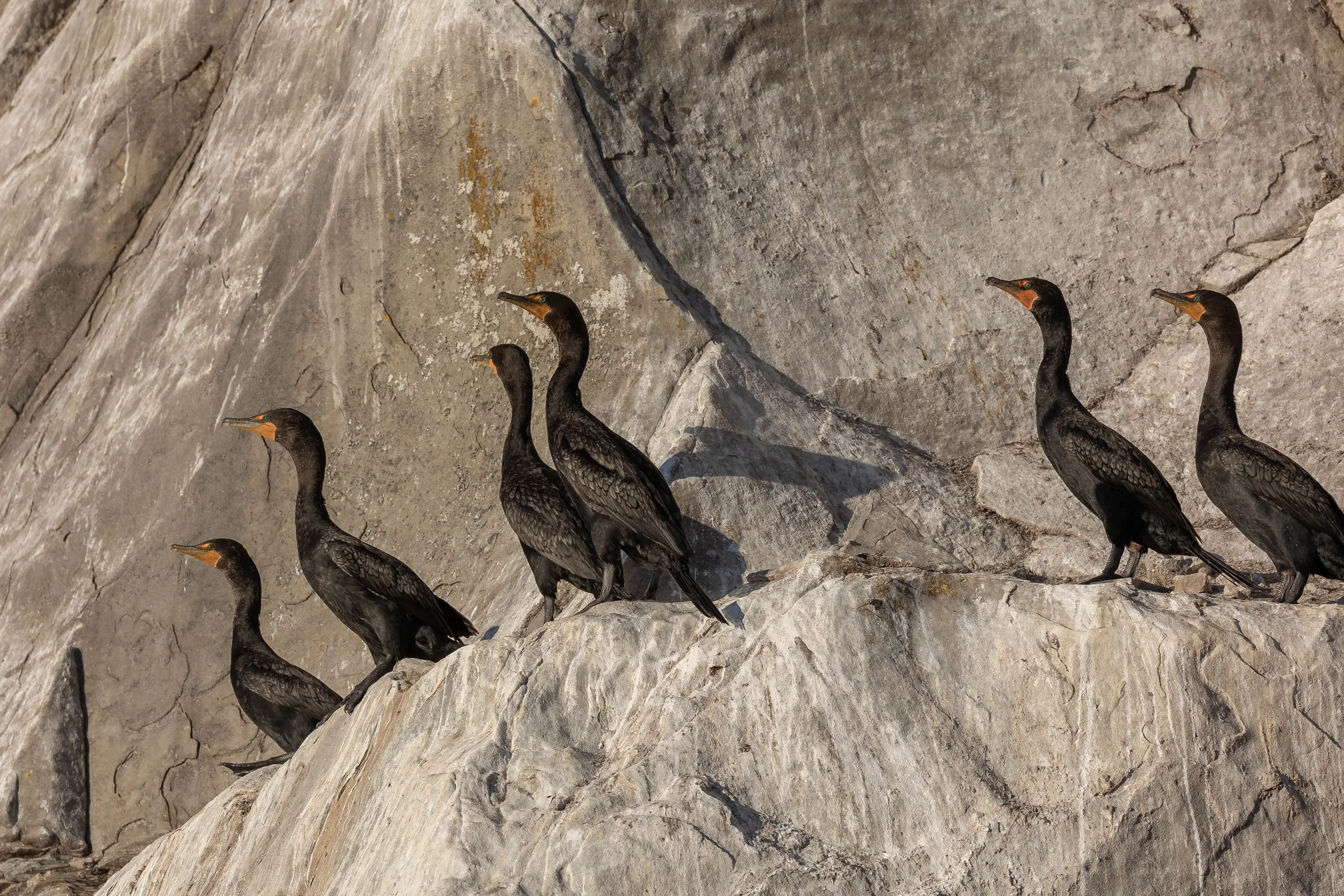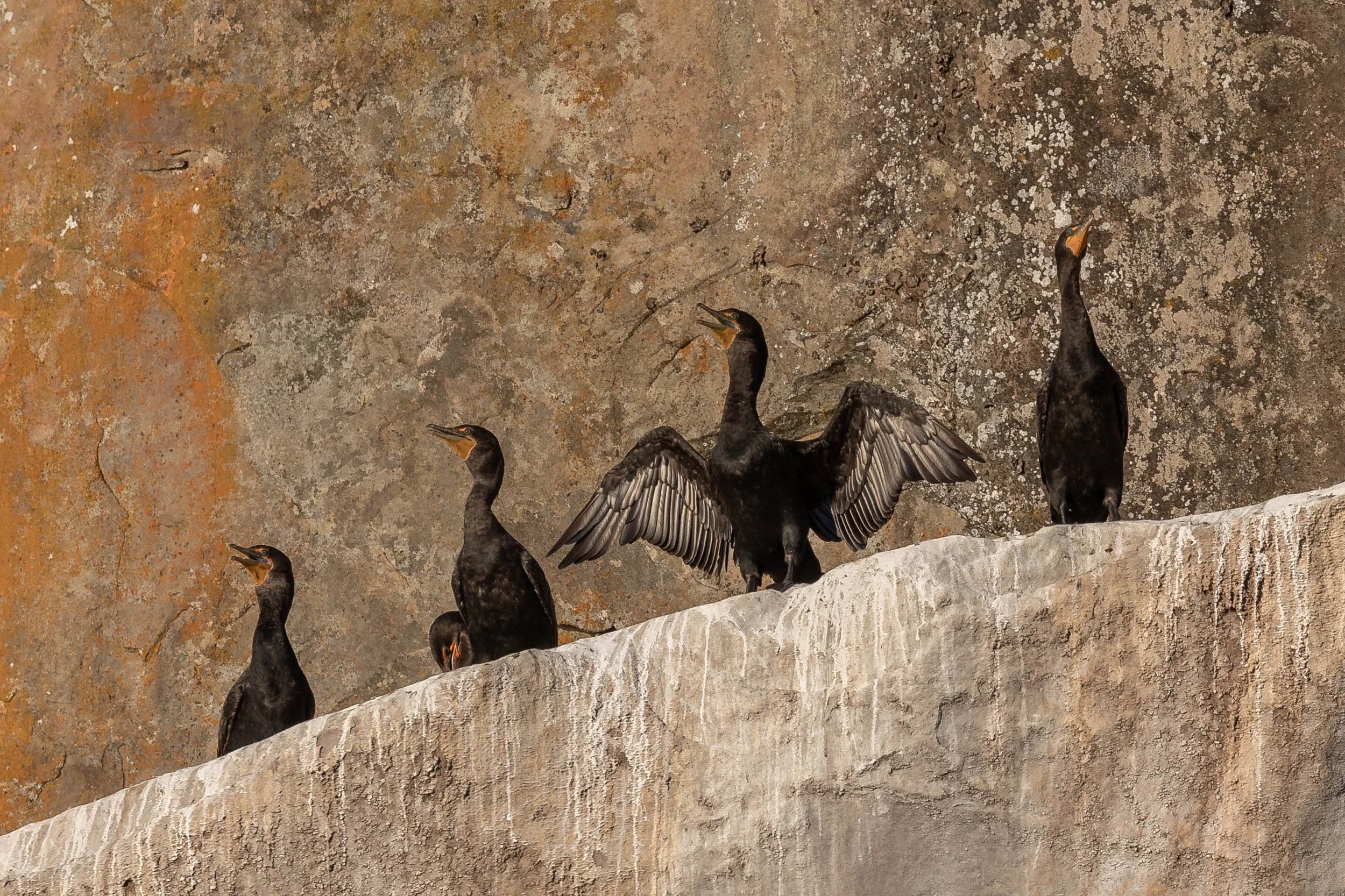August 30, 2024, 3.30 pm - The T060s in Northumberland Channel, and Humpback whales near Valdes
One open boat pushed off the dock this afternoon to begin their search for whales. We never know how far we’ll have to go before we find whales, or if we’ll find them at all, but today luck was on our side as they were close to home in Northumberland Channel! We spotted a family of Transient Killer Whales and quickly got to work identifying them as:
T060 Panthera ♀ (~1980)
T060C Yelnats ♂ (2001)
T060F Tigris ♀ (2012)
T060G Uncia ♀ (2019)
All of the Transients that come to our area are catalogued; they all get given a unique ID number and nickname and the catalogues are kept up to date with pictures of their identifiable features. There are a few different ways we can identify individuals. First, we take a look at the dorsal fins of our orca to see if there are any nicks or notches in the trailing edge that may tell us who our whales are. Second, we can look at the saddle patch (the white patch just below and behind the dorsal fin) for any unique marks or scarring. Third, each orca has an individually shaped eye patch; they’re essentially the fingerprints of the whale world. Some whales can be trickier to identify than others, for example, the large male in our group today has a doppelganger - so much so that he was named after his lookalike! Yelnats was named after another Transient Killer Whale named Stanley (Yelnats is Stanley backwards). They both have an identical notch near the top of their dorsal fin. Thankfully, we have those additional features we can look at in order to tell them apart. You can see their catalogue pictures below - their dorsal fins look very similar but they have different markings on their saddle patches.
These whales seemed to be on a mission today, moving quickly through the waves, giving us a rare chance to see the eyepatches and saddle patches a bit more clearly than usual! While there is some speculation that the whales will come further out of the water to give themselves more time to breathe in wavy weather, we also get to see more of them since there are peaks and troughs to the waves, and viewing the whales in those troughs will reveal more of the whale. No matter why, it was beautiful getting to watch these whales purposefully moving through the water.
We spent our hour with these whales, and decided to continue our travels in the Strait of Georgia to see if there would be other whales in store for us today! It turned out there was! We ended up getting a call on the radio from another whale-watching boat in the area who had found a humpback whale not too far, so we decided to head over! This whale was Kappa (BCX0158) and seemed to be feeding in the area. We can only really guess as to when humpbacks are feeding based on the small glimpse we get into their behaviour at the surface. If they are staying in one area and circling around, we can guess this means they are navigating to swallow their food under the surface. This is usually accompanied by slightly longer dive times since most of the humpback’s food is found 100-200 feet beneath the surface. Diving deeper for food also typically means that they lift their tail nice and high to help in those dives, as was the case today making it so we got some amazing looks at Kappa’s tail flukes.
After spending some time with Kappa as she was feeding more blows caught our attention towards Valdes Island so we headed over to investigate. We saw two humpback whales disappear below the waves and then were surprised when a single whale surfaced right beside the boat! Chi (BCZ0414calf2021) stole the attention as he circled our vessel closely, in what is called mugging. He blew some bubbles at us and put his rostrum up out of the water before apparently deciding he had investigated enough and he carried on, as did we! We headed over to Stinky Rocks to get a look at the Steller Sea Lions hanging on to the last of the rocks at high tide, and a few Harbour Seals trying to do the same. Finally, after a tour through the southern gulf islands, we made a final stop at the Gabriola Bluffs to watch the Cormorants which were hanging out at the cliffside. It was a great end to the trip! The onboard Marine Naturalist Val Watson captured some amazing photos from the day, which can all be viewed below!
T060 Panthera surfacing in Northumberland Channel.
T060 Yelnats has a unique scar on his saddle patch.
T060G Uncia is the youngest in the group!
T060C Yelnats.
Some red-necked Phalaropes swimming near the orca.
T060G Uncia in the waves.
T060F Tigris showing off both her eye patch and saddle patch.
T060C Yelnats breaking through a wave.
Did you know T060G is one of the only whales with the G designation?
T060C Yelnats showing off his eye patch.
Kappa going through the waves.
A wave breaking over Kappa's back.
Kappa's rostrum peaking out of the waves.
Kappa arching her back.
A nice fluke waterfall from Kappa.
Kappa diving in the sunlight.
A lovely look at the underside of Kappa's tail flukes.
A backlit blow from Kappa.
Kappa making a fluke waterfall.
The underside of Kappa's flukes.
Kappa's dorsal peaking through the waves with Mt. Baker in the background.
Kappa diving.
Chi's rostrum peaking out of the water.
Chi making a mini-fluke waterfall.
The underside of Chi's fluke.
Steller Sea Lions fighting on Stink Rocks.
A pile of Steller Sea Lions.
Cormorants on the Gabriola Bluffs.
A gull eating something at the Bluffs.
Cormorants with one drying off in the middle.


